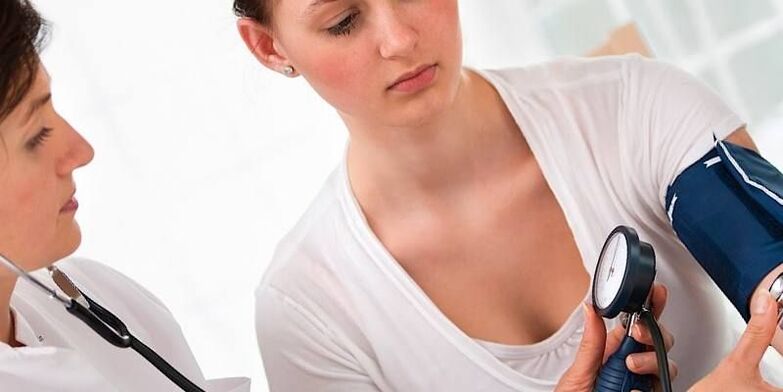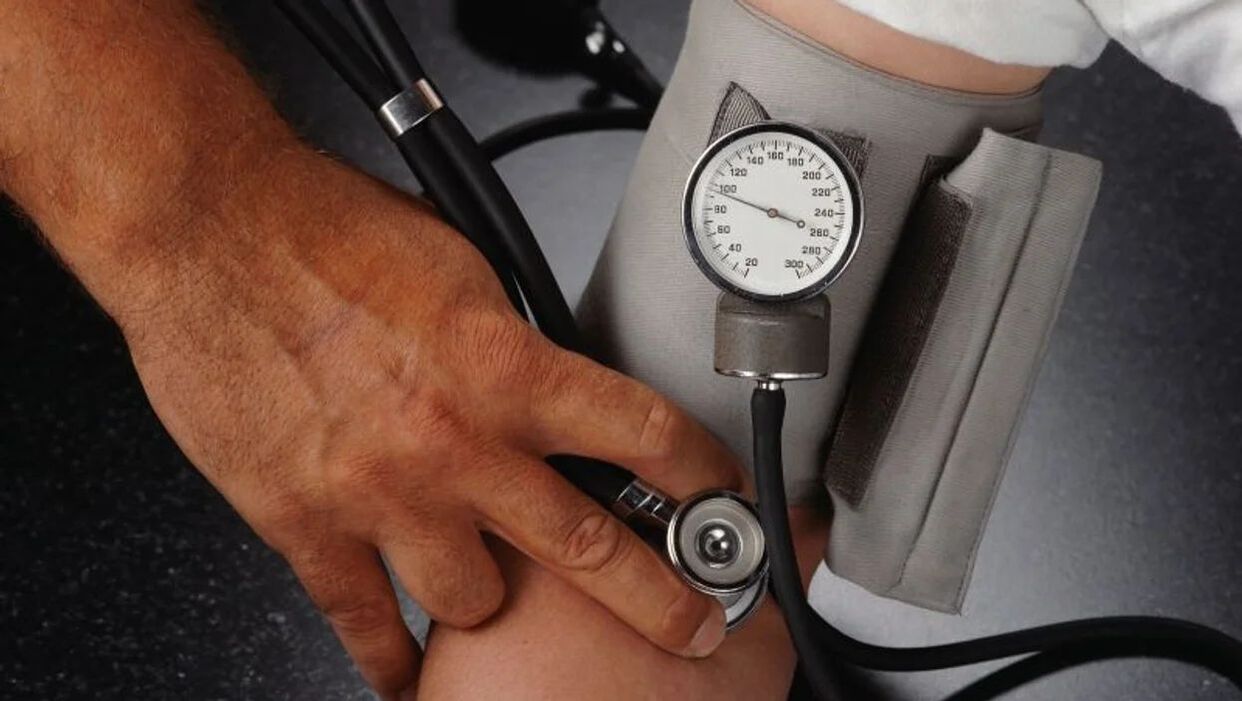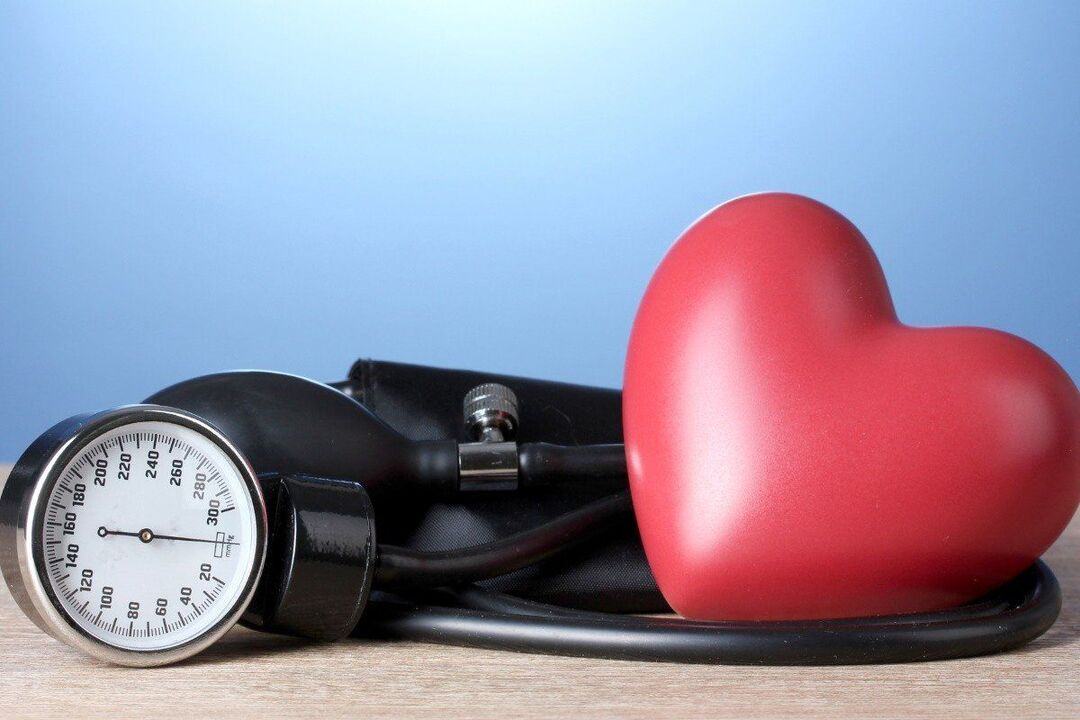A person is alive as long as his heart is beating. The "pump" of the heart ensures blood circulation in the vessels. In this regard, there is something called blood pressure. Abbreviated as AD. Any deviation from normal blood pressure levels is fatal.
Specializes in diagnosing and treating respiratory diseases and allergies, has methods for studying external respiratory function, testing for allergies to allergens, self-therapy, and specific immunotherapy. specific and non-specific.
Risk of developing high blood pressure
The risk of developing hypertension or arterial hypertension - high blood pressure - includes several factors. Accordingly, the more they have, the higher the likelihood that a person will have high blood pressure.
Risk factors for developing high blood pressure:
- genetic tendency. The risk of disease is higher for people with hypertension among first-degree relatives: father, mother, grandmother, grandfather, siblings. The more relatives you have with high blood pressure, the greater your risk;
- age over 35 years old;
- stress (tension hypertension) and mental stress. The stress hormone adrenaline increases your heart rate. It immediately constricts blood vessels;
- taking certain medications, such as birth control pills and various dietary supplements (iatrogenic hypertension);
- Bad habits: smoking or drinking alcohol. Components of tobacco cause vasospasm - involuntary contraction of the vessel walls. This narrows blood flow;
- Atherosclerosis - blockage of blood vessels with plaque. Total cholesterol should not exceed 6. 5 mmol/l of blood;
- kidney failure (renal hypertension);
- endocrine diseases of the adrenal, thyroid or pituitary glands;
- Excess salt in food. Table salt causes constriction of arteries and water retention in the body;
- inactive. Lack of physical activity is accompanied by a slow metabolism - and gradually weakens the entire body;
- excess body weight. Each additional kilogram increases blood pressure by 2 millimeters of mercury - mmHg;
- sudden weather changes;
- chronic lack of sleep and other provocateurs.
Most risk factors for developing hypertension are closely related to each other. So, heavy smokers in most cases develop atherosclerotic plaques, and physically inactive and malnourished people quickly gain excess weight. Such a combination of factors significantly increases the risk of pathological abnormalities in the heart.
Depending on the combination and degree of manifestation of the above factors, as well as the likelihood of cardiovascular complications over the next decade, there are 4 types of risk of developing arterial hypertension:
- low (risk less than 15%);
- average (from 15 to 20%);
- high (over 20%);
- very high (over 30%).
Risk factors for arterial hypertension are also divided into 2 types based on the ability to eliminate them: modifiable (modifiable) and not. For example, a person can quit smoking, but he cannot change his ancestors. The level of risk is summarized from several indicators. A patient with stage 1 hypertension who begins to abuse alcohol will significantly increase the odds of developing complications.
Hypertension is quite treatable. Much here depends on the timely diagnosis of the disease, the patient's perseverance and his readiness to completely change his lifestyle.
Grade 1 hypertension

Arterial hypertension can be primary, that is, developing independently, and secondary - a complication of another disease. In the latter case, treatment is carried out comprehensively, since it is necessary not only to normalize the pressure, but also to treat the cause of the accompanying disease.
A blood pressure reading of 120 over 80 mm Hg is considered normal. As they say, this is the "ideal" value for astronauts. 120 is called the upper blood pressure or systolic blood pressure (when the heart muscle wall contracts maximally). And 80 is the lower number or diastolic pressure (at maximum relaxation). Accordingly, hypertension is divided into systolic, diastolic and mixed (systolic-diastolic), depending on whether the upper or lower indicators exceed the threshold value.
When the blood vessel narrows, the heart has to work harder to push blood into the vessel, the blood wears out faster and begins to work intermittently. An increase in heart rate—heart rate—negatively affects the functioning of the entire body. The air and nutrients contained in the blood do not have time to enter the cells.
Like any disease, hypertension will progress if left untreated. The appearance of the first symptoms of hypertension is preceded by a prehypertensive state - prehypertension.
The severity depends on the stage of development of the disease:
- "soft" or light;
- moderate or borderline;
- very severe or isolated systole.
On the other hand, stage 1 arterial hypertension is called a mild form of the disease. The upper blood pressure index ranges from 140 to 159 and the lower blood pressure index ranges from 90 to 99 mm Hg. Disturbances in heart activity occur in waves. Attacks usually pass without consequences. This is a form of preclinical hypertension. Periods of exacerbation alternate with the complete disappearance of symptoms of the disease. During remission, the patient's blood pressure is normal.
Diagnosing hypertension is simple: measure blood pressure with a manometer. For an accurate diagnosis, the procedure is performed three times a day in a quiet environment and a comfortable state.
Even people at low risk for high blood pressure need to have their blood pressure checked regularly. A potential danger factor is enough to more closely monitor your heart's activity. For people at significant risk of heart disease, it is recommended to purchase a cardiovascular machine - a device that measures ECG - electrocardiogram - at home. Any disease is easier to treat in the early stages.
Symptoms of stage 1 hypertension
Symptoms of stage 1 hypertension include:
- headache that develops with exercise;
- aching or sharp pain in the left chest, spreading to the shoulder and arm;
- black spots in front of eyes.
We must not forget that in mild forms of hypertension all these symptoms appear from time to time. If after intense physical activity your pulse is faster or it is difficult to sleep due to noisy neighbors, you should not panic and consider yourself hypertensive.
During the period of improvement, the patient feels great. Mild hypertension has all the characteristic signs of heart failure. The greater severity of the disease differs only in the existence of symptoms and the appearance of complications.
Complications of grade 1 hypertension
Complications include:
- nephrosclerosis - kidney sclerosis;
- myocardial hypertrophy (left ventricle).
Most believe that mild arterial hypertension can be cured without any consequences. But the risk of complications in grade 1 is average, i. e. About 15%. High pressure in the vessels due to narrowing of the vessel lumen leads to insufficient blood supply to the tissues. Lack of oxygen and nutrients leads to the death of individual cells and entire organs. Necrosis begins with local, localized lesions. Over time, if left untreated, ischemic stroke is inevitable.
Circulatory disorders inevitably lead to metabolic disorders. This has a detrimental effect on the respiration and nutrition of any cell type. Pathological changes are inevitable, for example, sclerosis - replacement by connective tissue. With nephrosclerosis, the kidney wall becomes pathologically denser and the organ "shrinks". In this regard, the excretory function is disrupted and urea enters the blood.
If the blood vessels are narrowed, the heart will strain to push blood through them. This leads to pathological hypertrophy of the myocardium. This hypertrophy is called true or active. The volume and mass of the left ventricle increase due to thickening of its wall. This pathology is also known as cardiomyopathy. The heart adjusts its structure according to the body's needs. The extra muscle tissue allows it to tighten more. It would seem, how dangerous can this be? A "swollen" heart can compress neighboring vessels, and uneven muscle development can close the exit from the left ventricle. Cardiac hypertrophy sometimes leads to sudden death.
Complications from grade 1 hypertension occur extremely rarely. To avoid them, it is enough to minimize the risk of developing arterial hypertension, i. e. Eliminates its preconditions and causes.
Treatment of stage 1 hypertension
First, the doctor will advise the patient to change their lifestyle. The patient will be advised to sleep well, avoid stress, do targeted relaxation exercises, special diet, exercise, etc. v. If these measures are not sufficient, drug therapy will be used.
Cardiologists prescribe the following drugs: sedatives and other antihypertensive drugs.
Drugs are selected strictly individually, becauseMany hypertensive patients have comorbidities. The choice of medication is influenced by the patient's age and the type of medication they are taking.
If it is possible to prevent the disease in its early stages and cure it completely, future prevention cannot be ignored. Its principle is simple - it is to avoid all risk factors for hypertension. Thanks to a healthy lifestyle, you can prevent the appearance of genetic pathologies.
Increased blood pressure 2 degrees

This is moderate hypertension. Upper blood pressure is 160 - 179 mm Hg, lower blood pressure is 100 - 109 mm Hg. At this stage of the disease, the period of increased pressure lasts longer. Blood pressure rarely returns to normal.
Depending on the speed of transition of hypertension from one stage to another, benign and malignant arterial hypertension are distinguished. In the second case, the disease progresses so rapidly that it is often fatal. Hypertension is dangerous because the increased speed of blood movement through the vessels leads to thickening of their walls and even more narrowing of the vessel lumen.
Symptoms of stage 2 hypertension
Typical signs of arterial hypertension appear even in mild forms of the disease.
In the second stage, they are accompanied by the following symptoms:
- pounding feeling in the head;
- hypertension - vascular overflow, for example, redness of the skin;
- microalbuminuria – the presence of albumin protein in the urine;
- numbness and chills in the fingers;
- fundus disease;
- hypertensive crisis - sudden increase in pressure (sometimes up to 59 units at once);
- appearance or worsening of signs of target organ damage.
Fatigue, lethargy and swelling appear due to the involvement of the kidneys in the pathological process. Hypertensive crisis may be accompanied by vomiting, difficulty urinating and defecating, difficulty breathing, and watery eyes. Sometimes it lasts for several hours. Complications of hypertensive crisis are myocardial infarction and pulmonary or cerebral edema.
Forms of hypertensive crisis:
- autonomic nervous system (increased heart rate, excessive excitement, hand tremors, unmotivated panic, dry mouth);
- edema (coma, eyelid swelling, suppression of consciousness);
Symptoms of stage 2 hypertension are more difficult for patients to tolerate. He continuously suffered from pathological manifestations of high blood pressure. The disease at this stage regresses reluctantly and often relapses.
Complications of 2 degree hypertension
Complications of stage 2 hypertension include the following diseases: aortic aneurysm - pathological protrusion of the wall.
To target organs, i. e. Internal organs affected by hypertension include:
- Hemorrhage in various organs occurs because the blood vessel walls gradually thicken, lose their elasticity and become brittle. Increased blood flow easily destroys such vessels. The opposite process occurs with the development of an aneurysm. Here the walls become tense and thin due to increased blood circulation. They are so weak that they tear easily.
- Pathologically narrow lumen increases the likelihood of developing atherosclerosis - fatty deposits on the walls - and thrombosis - clogging them with blood clots. Bleeding of brain cells leads to lack of oxygen and death. This phenomenon is called encephalopathy. Ischemia is a lack of oxygen to the heart. Angina is a condition of continuous chest pain.
Pathological processes related to the underlying disease develop in connection with it. Accordingly, if treatment is not started in time or medical prohibitions are violated, the target organ will become increasingly numerous and it will be almost impossible to restore health.
Hypertensive disability grade 2

Hypertensive patients are continuously monitored at the clinic and have regular examinations. In addition to daily blood pressure measurements, they are regularly prescribed electrocardiograms. In some cases, an ultrasound - echocardiogram, urine tests, blood tests and other diagnostic procedures may be required. Patients with moderate hypertension have poorer work productivity than healthy people.
If there is a persistent decline in bodily functions due to hypertension, the patient will be sent to the clinic to obtain a medical and social examination report. In rare cases, hypertensive patients are examined at home, in the hospital, or even in absentia. Sometimes an additional inspection program is drawn up. For people with disabilities, experts from the Department of Health and Social Professionals develop a mandatory individual rehabilitation program.
To determine the disability group, the expert committee along with the degree of hypertension takes into account the following factors:
- information from medical history about hypertensive attacks;
- patient's working conditions.
The procedure for establishing a disability group is necessary to obtain suitable employment. Whether it is easy to find an employer willing to accept the work of a "lowly" employee is another question. If a job applicant submits documents confirming his or her disability, according to federal law, he or she must be provided with the necessary working conditions.
Employers hesitate to hire people with disabilities because. . . Their working hours have been reduced while still being fully paid (for groups 1 and 2). In addition, they are forced to take sick days more often than other employees and their annual leave days also increase. Regarding this issue, most people with group 3 disabilities hide their illness to get a high-paying job. Violations of medical guidelines regarding working conditions will cause the disease to worsen over time.
People with disabilities in group 3 receive cash benefits and are allowed to practice their profession with some restrictions:
- Strong vibration and noise are contraindicated;
- You may not work overtime, on weekends or on night shifts without the employee's consent;
- Continuous physical or psycho-emotional stress is not allowed;
- Prohibit working at heights, in hot shops, near dangerous mechanisms;
- Reduce working time requiring high concentration;
- seven-hour workday.
A special case is stage 2 malignant arterial hypertension. Its development was so rapid and the patient's condition was so severe that the committee placed him in group 2 disability. This is not the case. is also a working group. For disability degrees 2 and 3, medical and social examinations are carried out annually. People with disabilities who belong to the following categories are exempt from re-evaluation:
- men over 60 years old;
- women over 55 years old;
- people with irreversible anatomical defects.
The disability grouping is due to the social protection needs of hypertensive patients. His ability to participate in work activities is limited.
Treatment of stage 2 hypertension
At this stage of the disease, it is impossible not to use medication. The tablets are taken regularly, if possible at the same time of day. Patients should not think that just taking medicine is enough to cure the disease. If he does this while at the same time being carried away by, for example, fatty foods and alcohol, the positive effects of therapy will quickly disappear. The disease will move to the next stage, when all treatments are no longer effective.
Increased blood pressure 3 degrees

Why are doctors wary of deviations in blood pressure readings from normal, even slightly? The fact is that when the pressure increases by several units, the risk of developing cardiovascular complications increases in the same proportion. For example, if a person has mild hypertension and the blood pressure deviates from the normal range of 120 to 80 mm Hg. to 39 units, the possibility of pathological abnormalities occurring in different organs is very high (39%). So what can be said about the 3rd degree of the disease, in which the deviation is at least 60 units?
Stage 3 hypertension is a serious form of chronic disease. Blood pressure rises above 180/110 mm Hg and never drops to the normal level of 120/80. Pathological changes were irreversible.
Symptoms of stage 3 hypertension
Symptoms of stage 3 hypertension include:
- impaired ability to coordinate movements;
- persistent visual impairment;
- Paralysis and paralysis due to cerebral circulation disorders;
- Prolonged hypertensive attacks with speech disorders, blurred consciousness and sharp pain in the heart;
- Significant limitations in independent mobility, communication, and self-care.
In severe cases, hypertensive patients can no longer cope without outside help, they need constant attention and care. The above signs of hypertension show that the patient's health is gradually deteriorating, the disease is spreading to new organ systems and there are more and more complications.
Complications of stage 3 hypertension
Complications of stage 3 hypertension include the following diseases:
- myocardial infarction – the middle muscle layer of the heart;
- cardiac asthma - attack of suffocation;
- peripheral artery damage;
- Hypertensive retinopathy affects the retina of the eye;
- maculopapular ("shadow") is a defect, a blind spot in vision.
Complications of grade 3 arterial hypertension are also known as associated clinical conditions. When cerebral circulation is impaired, a stroke develops, accompanied by loss of sensation in the limbs and fainting. Heart failure is a complex of heart diseases. The kidneys gradually weaken. If hypertension is a secondary disease and occurs on the background of diabetes, then kidney disease is inevitable.
The more the disease progresses, the more terrible and severe the consequences become. The circulatory system is so important for the life of the body that even the slightest deviation in its functioning has a powerful destructive effect.
Hypertensive disability grade 3
In case of severe illness, disability group 1 is established. At this stage, the patient is practically unable to work. Sometimes they are recognized as partially capable of work and continue to work, but only at home or under special conditions.
But even with the most severe disability, patients must undergo rehabilitation procedures. In this condition, this is necessary to prevent death.
Treatment of stage 3 hypertension
As the course of the disease becomes more severe, more and more powerful drugs are prescribed, or their list remains the same, but the dosage increases. At this stage of hypertension, the effectiveness of drug treatment is minimal. Patients with chronic hypertension must take medication for life.
When the disease becomes severe, surgery may be required. This surgery is indicated for certain blood vessel and heart diseases. Stem cell therapy for stage 3 arterial hypertension is considered innovative.
Increased blood pressure 4 degrees
Some experts also determined that the disease is at stage 4, very severe. In most cases, death is near. They try to reduce the patient's suffering as much as possible and with each attack of hypertension they provide first aid. The patient lies down and raises his head. He was given emergency medication to sharply lower his blood pressure.
Without treatment, new complications will appear. Some of them provoke others, and illness increasingly takes hold of a person. To promptly stop this destructive process, you just need to monitor the progression of blood pressure changes, at least using a regular tonometer.
Example of risk calculation depending on the stage of hypertension
Stages of hypertension Other risk factors, POM or disease BP (mmHg)
| Normal high | Degree 1 | Degree 2 | Level 3 degree | ||
| GARDEN 130-139 Delta 85-89 |
GARDEN 140-159 DBP 90-99 |
GARDEN 160-179 DBP 100-109 |
SBP ≥180 DBP ≥110 |
||
| Phase I | There are no other FRs | Low risk (risk 1) |
Low risk (risk 1) | Moderate risk (risk 2) |
High risk (risk 3) |
| 1-2 FR | Low risk (risk 1) |
Moderate risk (risk 1) |
Medium / high risk |
High risk (risk 3) |
|
| ≥3 FR | Short / moderate risk (risk 1) |
Medium / high risk |
High risk (risk 3) |
High risk (risk 3) |
|
| Phase II | POM, stage 3 CKD or DM were absent Organ damage |
Medium / high risk |
High risk (risk 3) |
High risk (risk 3) |
High / very high risk |
| Phase III | Confirmed CVD and CKD stage ≥4 or diabetes with organ damage |
The risk is very high (risk 4) |
The risk is very high (risk 4) |
The risk is very high (risk 4) |
The risk is very high (risk 4) |
GB - hypertension
SBP - systolic blood pressure
DBP - diastolic blood pressure
RF is a risk factor
CVD - cardiovascular disease
CKD - chronic kidney disease
DM - diabetes mellitus
POM - target organ damage
Once the type of risk is determined, the doctor can identify factors that can work to reduce it. Among these modifiable characteristics:
- Obesity (with a BMI over 30), as well as central or visceral obesity, is defined by waist circumference.
- Social distancing.
- Chronic stress.
Left ventricular hypertrophy, chronic kidney disease, serious heart rhythm disorders such as atrial fibrillation and others may also increase the risk.





























